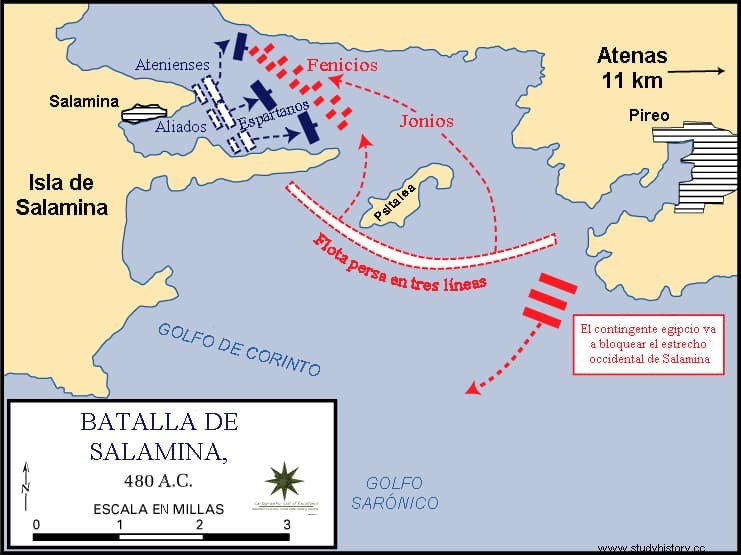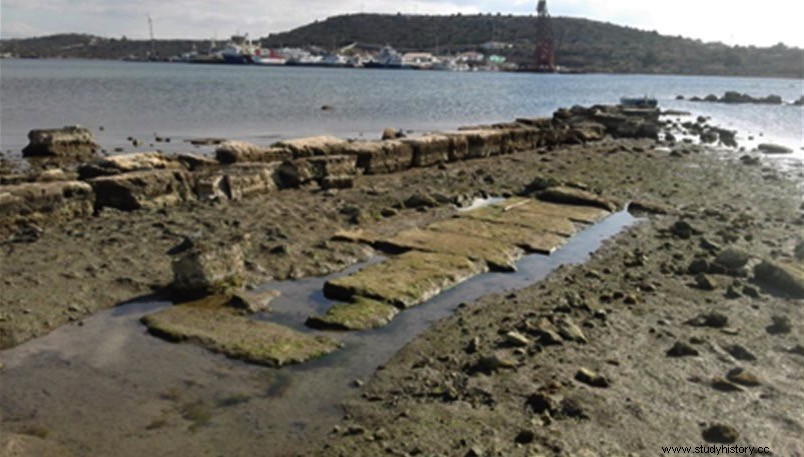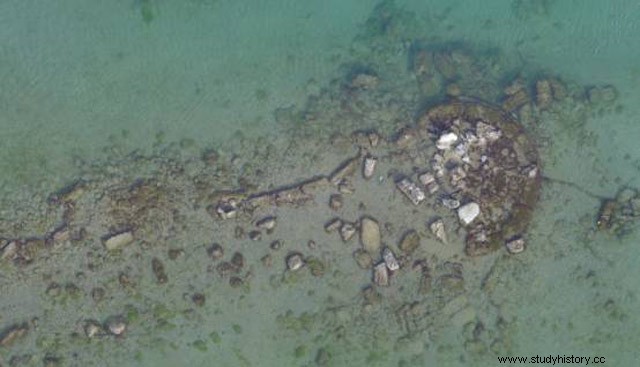The Battle of Salamis is considered one of the most important in the history of Western culture.
Indeed, both the battle of Salamis and the subsequent one at Plataea marked a turning point in the Persian Wars. After them, the Persian empire never again tried to conquer Hellas. A Persian victory at Salamis would have altered not only the history of ancient Greece but that of all of Western Europe.
In 2016 a team of Greek and Danish archaeologists had found the remains of the ancient Athenian naval base built in 493 BC. in Piraeus. The ships of the joint Greek fleet were sheltered there in the weeks and days before the battle against the Persians.

Nine months later, the Greek Ministry of Culture announced another discovery, that of the place of the first position of the Hellenic ships on the day of the battle. The historical sources (mainly Herodotus, Thucydides and Plutarch) that speak of what happened in Salamis make it very difficult to determine both the exact moment of the battle and the positions and movements of the contenders.
The course of the fight has also not been accurately described, and apart from the Persian king Xerxes, who was watching it from the top of Mount Aigaleo, it is unlikely that those who participated in the fight were too clear about what was happening.

Most of what we know is based on assumptions and logical deductions taking into account the situation, the terrain and information from the sources.
That is why the discovery, made by a scientific team of 20 archaeologists under the waters of Ambelakia Bay, on the east coast of Salamis, is undoubtedly exciting and important.
Work began in November 2016 in the western part of Ambelakia Bay, where submerged structures appeared that, according to archaeologists, correspond to the old military and commercial port of the ancient city-state of Salamina. This is where at least part of the Greek fleet would have congregated the day before the battle in 480 BC. Very close to the place are the monuments of the Polyandreion (the tomb of the soldiers) and the modern one of Kynosoura.

But also on three sides of the bay, to the north, west and south, remains of port structures, fortifications and various buildings have been found. In the southern part, there is a long pier 160 meters long, at the end of which there is a circular defensive tower 7 meters in diameter. Fragments of amphorae and other types of pottery, Corinthian coins, and other small objects also appeared.
